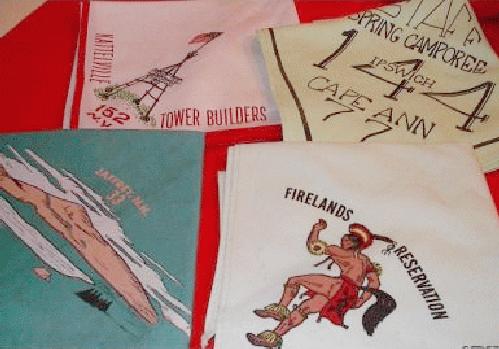
Figure 1.--We have noted three types of Scout neckerchiefs. These are the third type, commemorative neckerchirfs worn at jammborees, camps, trips, or other special occassion.


Figure 1.--We have noted three types of Scout neckerchiefs. These are the third type, commemorative neckerchirfs worn at jammborees, camps, trips, or other special occassion. |
Arguably the most popular part of the Scout uniform is the kerchief or Scout scarf. Baden Powell suggested that a kerchief be worn for a variety of reasons. Some other early Scouters were not convinced that it was necessary. The kerchief, however, proved popular with the boys and was retaned. In fact, most other major uniformed groups which followed the Scouts, including the Hitler Youth and Young Pioneers, also adopted kerchiefs. Many Scouts today no longer wear recognizeable uniforms often wear the Scout kerchiefs. Early Scouts and Cubs all wore the same kechiefs, but in many countries different groups of Scouts wear group kerchiefs.
Argueably the most popular part of the Scout uniform is the kerchief or Scout scarf. The kerchief, however, proved popular with the boys and was retaned. In fact, most other major uniformed groups which followed the Scouts, including the Hitler Youth and Young Pioneers, also adopted kerchiefs. Many Scouts today no longer wear recognizeable uniforms often wear the Scout kerchiefs. Early Scouts and Cubs all wore the same kechiefs, but in many countries different groups of Scouts wear group kerchiefs.
Baden Powell suggested that a kerchief be worn for a variety of reasons. He wrote in Scouting for Boys, "Then comes the scarf or neckerchief which is folded into a triangle with the point at the back of the neck. Every Troop has its own scarf colour, and since the honour of your Troop is bound up in the scarf, you must be very careful to keep it clean and tidy. It is fastened at the throat by a knot, or "woggle", which is some form of ring made of cord, metal, or bone, or anything you like. The scarf protects your neck from sunburn and serves many purposes, such as for a bandage or as an emergency rope."
Some other early Scouters were not convinced that it was necessary. Many early American Scouts did not wear kerchiefs. It was, however, quickly adopted by Scouts in most other countries. American Scout organizer, James E. West, wrote in 1927, "At Santa Barbara following the earthquake and in Illinois and Indiana during the tornado disaster, the Scout's neckerchief was a passport to any Scout through the police and hospital lines. The Scout Uniform in those stricken areas was the badge of a boy on an errand of courageous service."
We have noted three types of Scout neckerchiefs. Some or all three of the neckerchiefs have been worn by Scouts in different countries and at various times. First, there is the standard issue neckerchief approved by the appropriate Scout association. Usually there are different colors for Souts and Cubs or other levels of Scouting. Second, there is the unit neckerchief which may be worn by all the boys in a Scout Troop. Here Scouts and Cubs may wear the same neckerchief. Third there are commemorative neckerchirfs worn at jammborees, camps, trips, or other special occassion.
Britush and most other Scouts began weaking neckerchiefs from the earliest days. They became such a symbol of Scouting, that other youth groups in countries that banned Scouting (Germany, Italy, and the Soviet Union), adopted the Scout neckerchief for their new Government sponsored groups. The American Scouts did not wear neckerchiefs in the 1910s with the first uniform, bit thet were adopred in the 1920s when a new uniform was adopted to give a less militaristic image. The standard American Scout neckerchief was red and when Cubbing began in 1930 the standard Cub neckerchief was yellow. I'm less sure about Britin. A British reader tells us, "I think there are different colours/designs for the scarves depending on the troop and area." This requires, however, further investigation. Interestingly in countries where Scouts have generally given up on uniforms, like Germany, you still see some of the boys wearing Scout neckerchiefs.
A variety of Scouters have commented on the kerchief.
Woogle is the British term for kerchief slides. It is recignized by Scouters around the world, except perhaps in the United States. Many Scouts just wear the standard woogle. Others like to make their own, often at Scout camps. Making woogles was particularly popular in the 1930s and 40s.
Navigate the Historic Boys' Uniform Chronology Pages:
[Return to the Main chronologies page]
[The 1900s]
[The 1910s]
[The 1920s]
[The 1930s]
[The 1940s]
[The 1950s]
[The 1960s]
[The 1970s]
[The 1980s]
[The 1990s]
[The 2000s]
Navigate the Historic Boys' Uniform Web Site:
[Activities]
[Biographies]
[Chronologies]
[Countries]
[Essays]
[Garments]
[Organizations]
[Religion]
[Other]
[Introduction]
[Bibliographies]
[Contributions]
[FAQs]
[Questions]
[Unknown images]
[Boys' Uniform Home]
Navigate the Historic Boys' Uniform Web organizatiion pages:
[Return to the Main Scouting Garment page]
[Boys' Brigade]
[Camp Fire]
[Hitler Youth]
[National]
[Pioneers]
[Royal Rangers]
[Scout]
